You may not find this terribly rewarding unless you're included here, so this is a good time for casual and random browsers to turn back before they get too caught up in the sweep and majesty of the proceedings and can't let go.

We're out for a pleasant drive in the Province of Piacenza countryside, south of town, and the Castello di Rivalta has been recommended. This is the borgo adjoining the castle.

The castle, built above the banks of the River Trebbia, was first mentioned in 1025, but in the early 14th century it was given to the Landi family, which evidently still owns it. It was besieged by the Spanish in 1636 and looted by a troop of Germans in 1746, and again by the French in 1799.

We're presently in the fortified village or borgo alongside the castle, which sports an hotel and a couple of restaurants; the castle's around here somewhere, evidently.
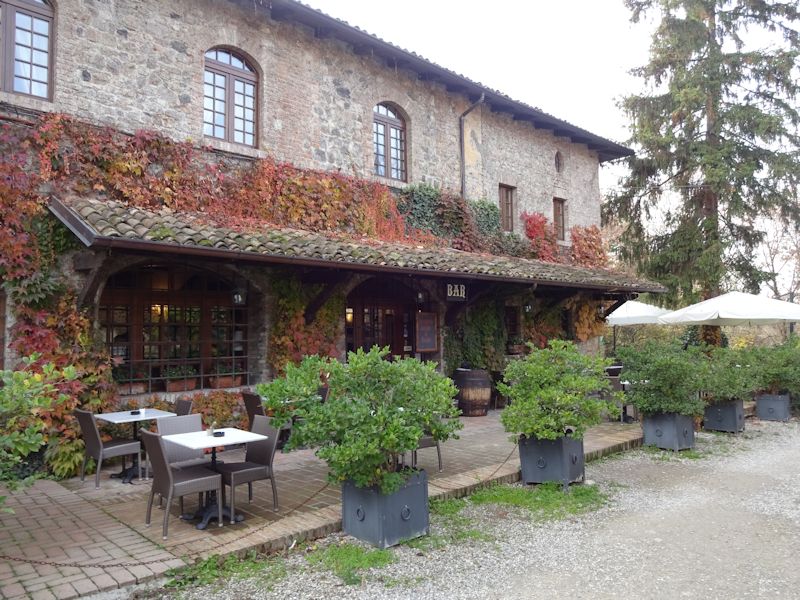

Confession: I thought that was the castle, and was somewhat disappointed. But it wasn't.
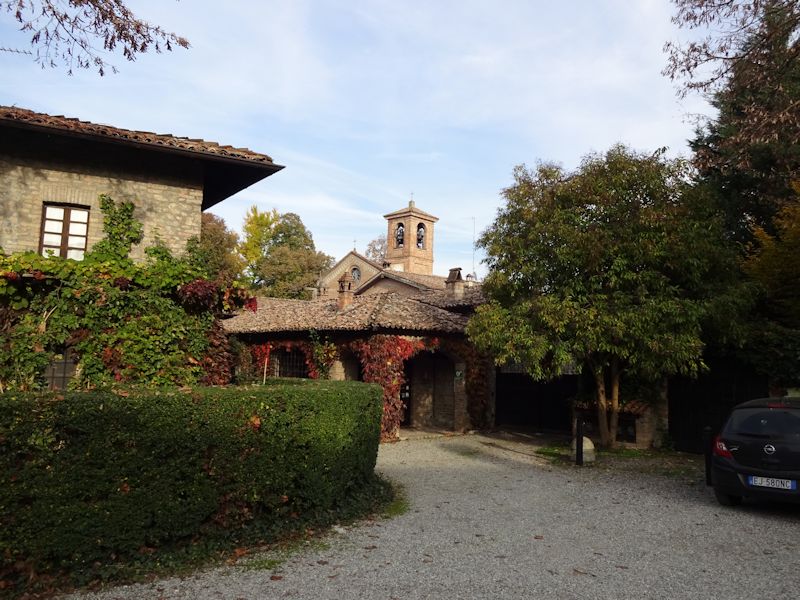
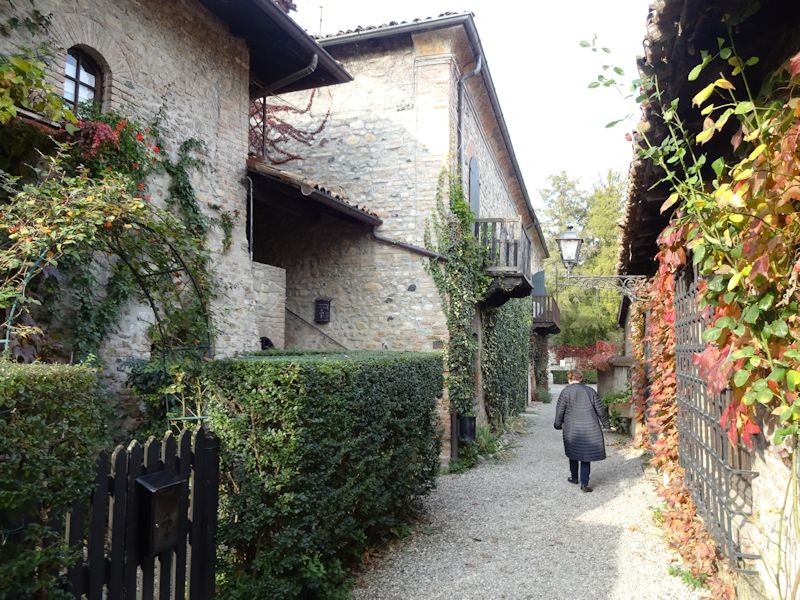
In the village surrounding the Castello di Rivalta
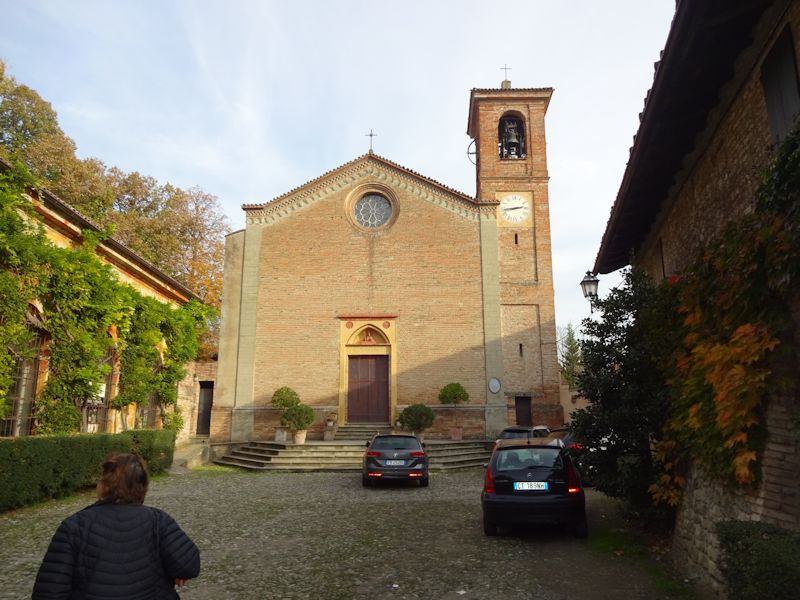
And its Chiesa di San Martino from the 15th century

Uh oh, the Castello di Rivalta is closed. Alas.

Back towards the village gate

The Rivalta high street

We're a little disappointed at this point, but oh well. Much later we really discovered what we'd missed --
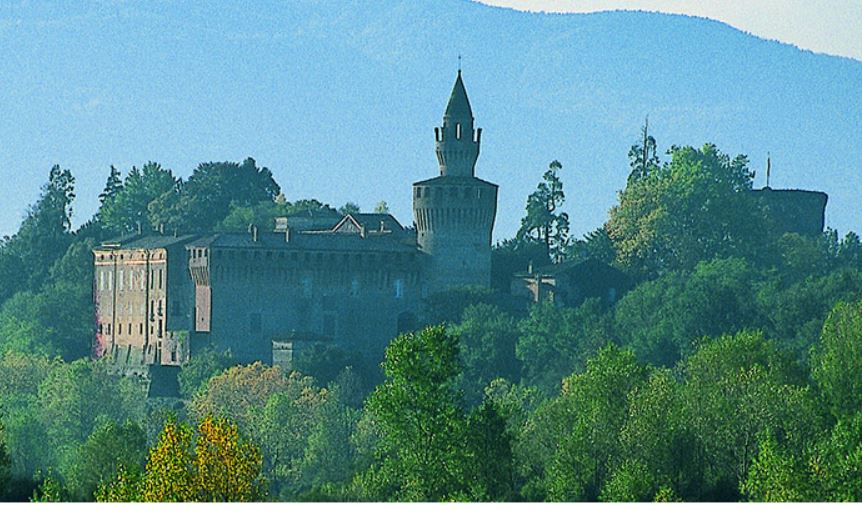
-- We'd missed the whole thing. See here.

"Two gentleman on an elephant" -- this is actually somebody's monument to the Carthaginian commander Hannibal, who got his first big victory of the Second Punic War against the Romans, in 218 BC, somewhere here along the banks of the River Trebbia. Whether he still had any war-elephants left after crossing the Alps may be doubtful (R. Miles, Carthage must be destroyed: the rise and fall of an ancient civilization [2010], 268-70).

We've moved on a bit: we're now in the fortified village of Castell'Arquato, some 30km southeast of Piacenza. The public carpark is somewhat out of the way, so now we're wandering, looking for the good stuff.

The early Castell'Arquato was built on an outcrop of the River Arda, a tributary of the Po that comes down out of the Apennines through the Val d'Arda. It may originally have been a Roman military outpost, but the first documented mention dates from the mid-8th century, when it was referred to as the Pieve (meaning a rural church distinguished by having a baptismal font) -- in 789, the lord Magnus willed the church and town to the Bishop of Piacenza.
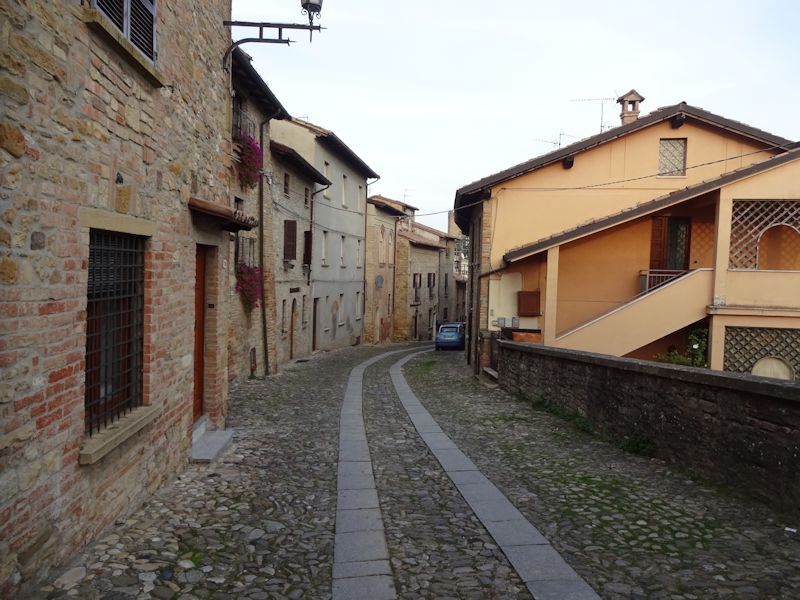
In the very early 13th century the Bishop of Piacenza moved his residence here, and the town developed rapidly; by 1220 it had been granted the right to an autonomous government, for a fee of course.

There's the good stuff, at the high point of the village. In those days, the town was administered by a podestà, a usually short-term elected official; the crenellated tower on the left is the Palazzo del Podestà. Unusually, I think, the podestà here was elected from the powerful local families, whereas elsewhere they were normally deliberately chosen from outside the local region.

A sacred fixer-upper. Autonomous government ended when in 1290 a faction led by the Scotti family took the place over as a seignory. Alberto Scotti oversaw a mini-golden age during which most of the major buildings were constructed, but in 1316 Galeazzo Visconti and his Milanese took over the city after a year's siege, and it remained under relaxed Visconti rule until 1438, when the last Visconti Duke of Milan gave it to his chief mercenary commander or condottiere, Piccinino.

A feline stand-off! The Milanese came back, however, in 1447 under the new dynasty the Sforzas, and the Sforzas remained in greater or lesser control over the region until 1707, when it was joined to the Farnese dukedom of Parma and Piacenza, which then passed to the Bourbons, alas.
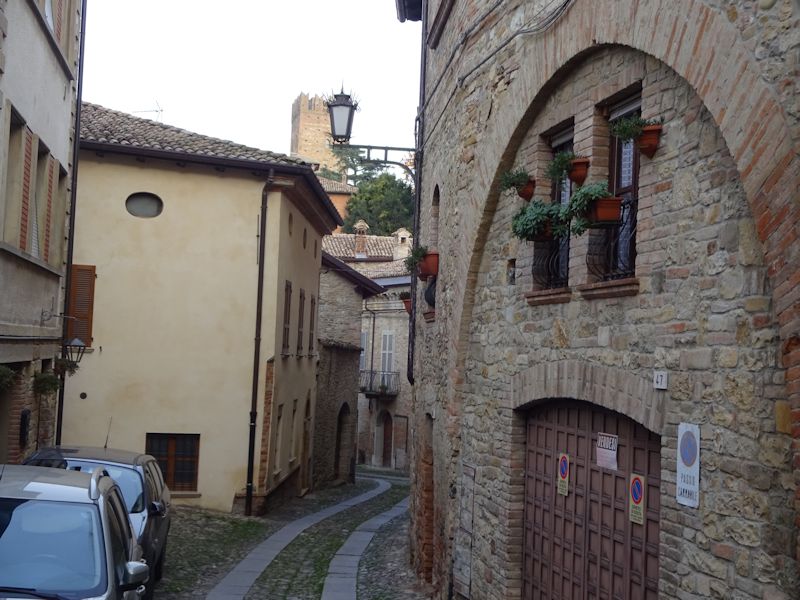
We keep adjusting our labyrinthine route by whichever tower is peeking up above the rooftops.

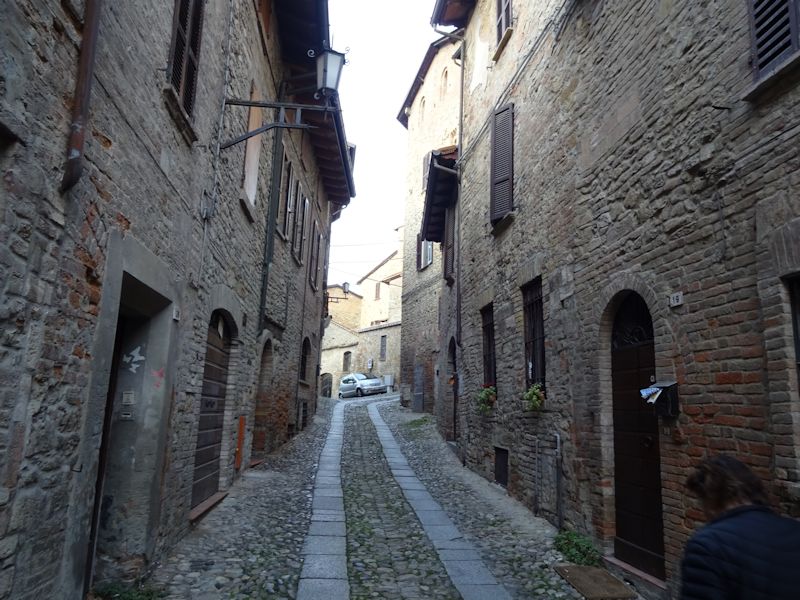
The last uphill, to the Via Sforza Caolzio

We're probably here.

The Palazzo del Podestà and Tourist Office
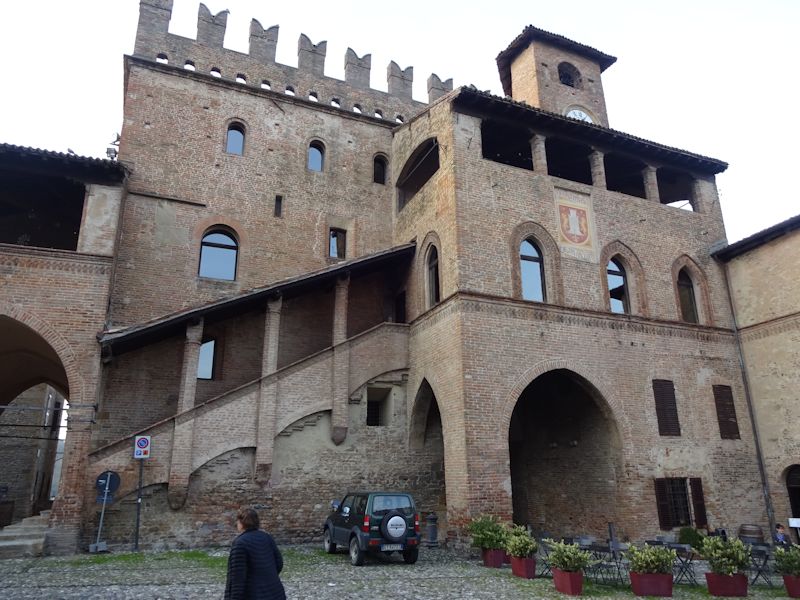
The Palazzo del Podestà, the centre of civic government, dating from the early 14th century
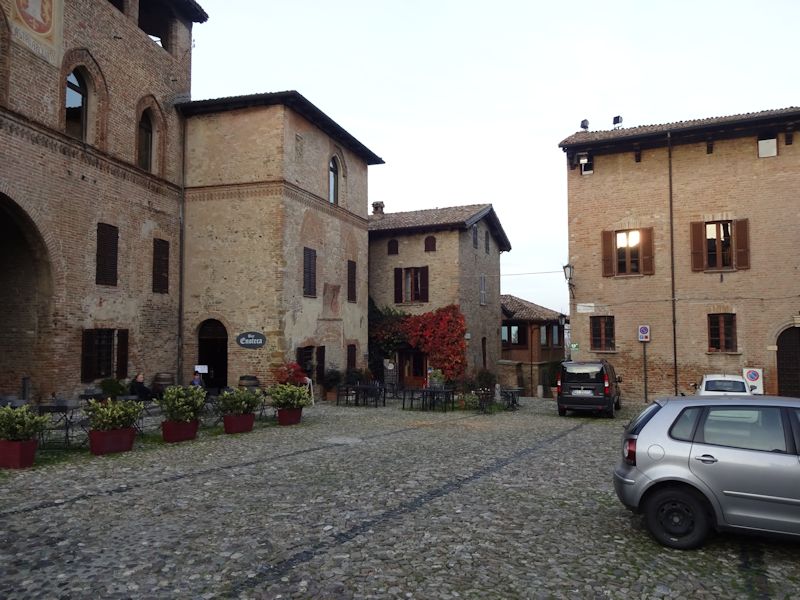
The piazza in front of the Palazzo and the Collegiate Church of Mary Assunta

The quadruple apse of the Collegiata di Santa Maria, first built in 756 as a rural pieve but entirely reconstructed following the earthquake of 1117, consecrated in 1122. The belltower dates from the 13th century, and the elaborate portico on the right side in this image, from the late 14th century.
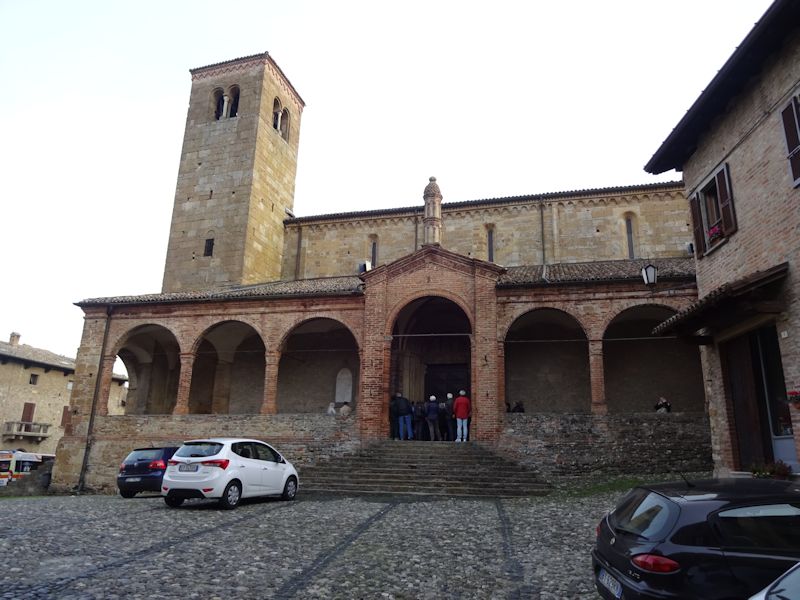
The portico of the church
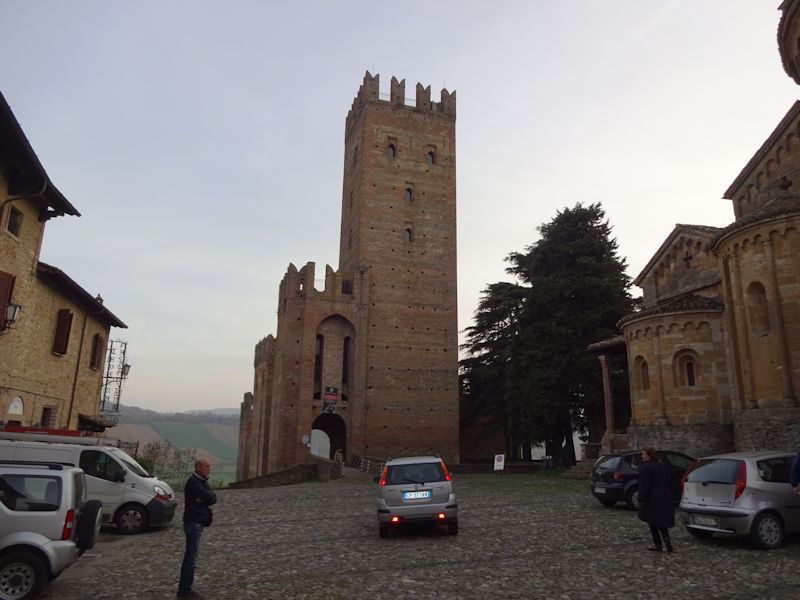
And across the main piazza, this is the Rocca Viscontea, the home of the Milanese garrison built under the Visconti rulers from 1342.
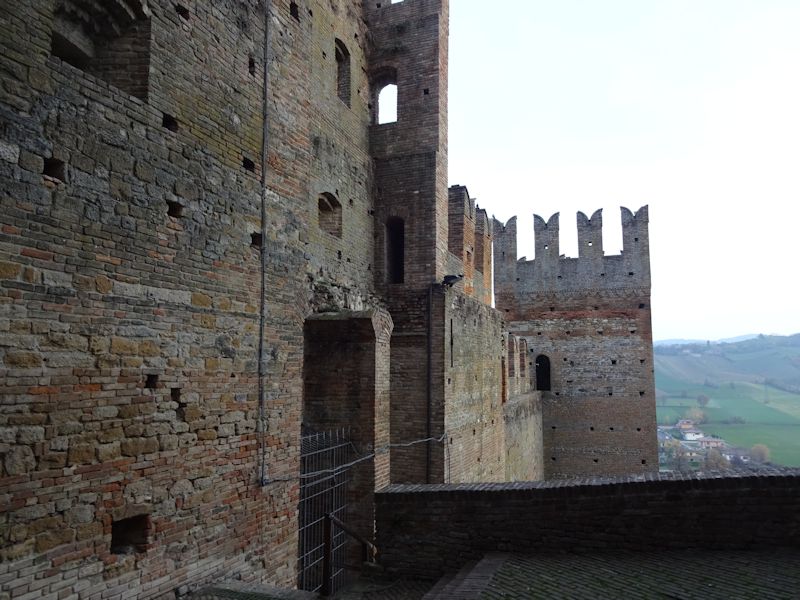
A commanding position, the rocca or fortress overlooks the well-traveled valley with four towers and a impressive keep, now a "medieval museum" which focuses mostly on torture paraphernalia.

A few parts of it have gone missing over time.
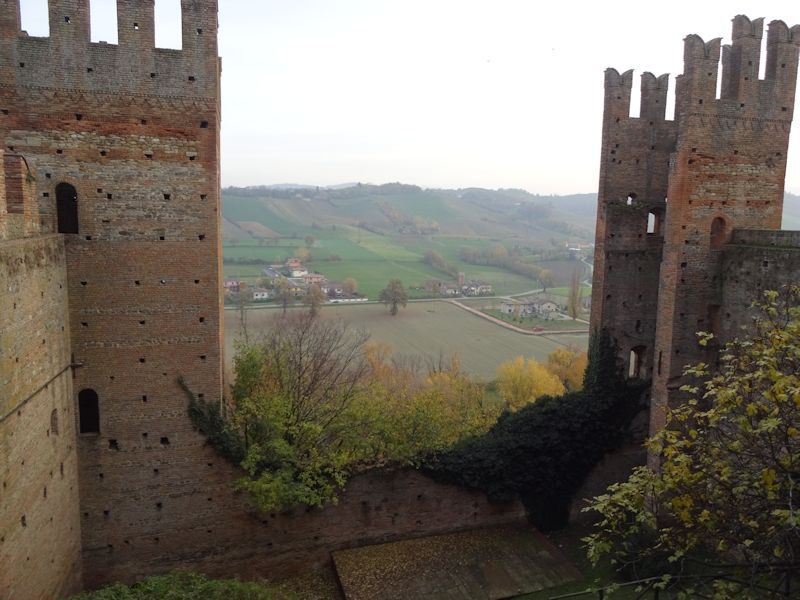

The presentation is well done, and a lot of the instruments look authentic, but, room after room up the inside of the tower, it does start to seem a little creepy.

This is amongst the least obscene of them.
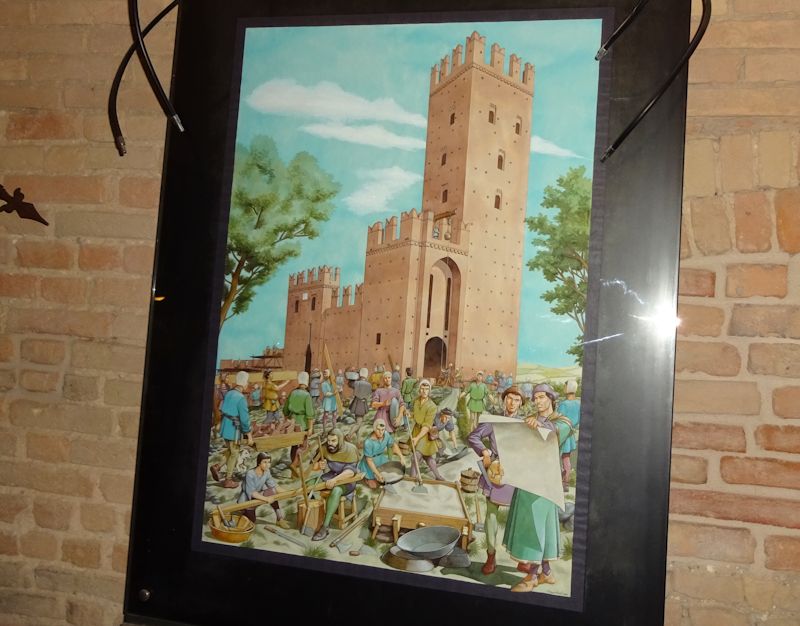

Imagine walking round with that on your face all day. Probably meant as a deterrent. 'No more unwelcome speech from you!'

Not a torture instruments fan

The prospect from halfway up the tower of the keep

A renewed interest in torture here as we ascend alone to the roof

Castell'Arquato from the top of the Rocca Viscontea keep
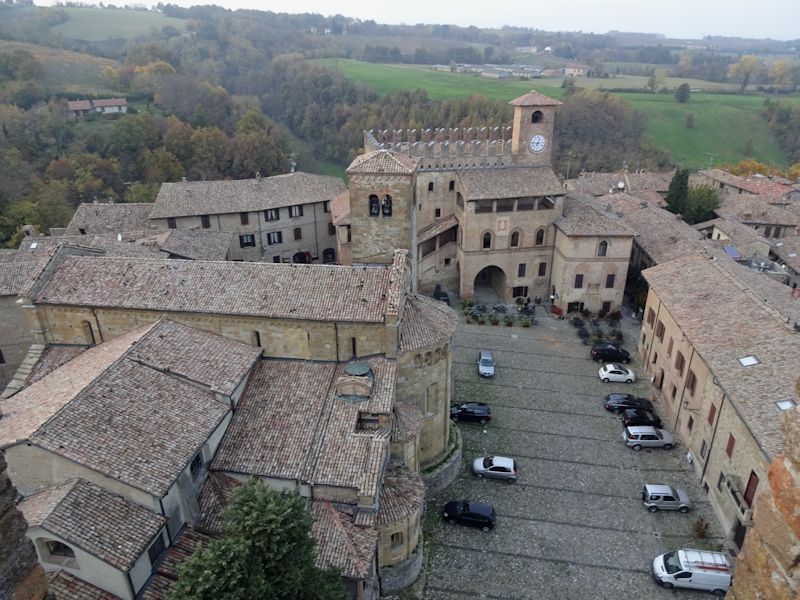
The Collegiate Church and Palazzo del Podestà


And in the other direction. The interior of the church was fairly remarkable, too (but I'd forgotten to recharge my Cyber-shot battery, so that's it for today). Next stop: Gubbio in Umbria.
 Dwight Peck's personal website
Dwight Peck's personal website










































